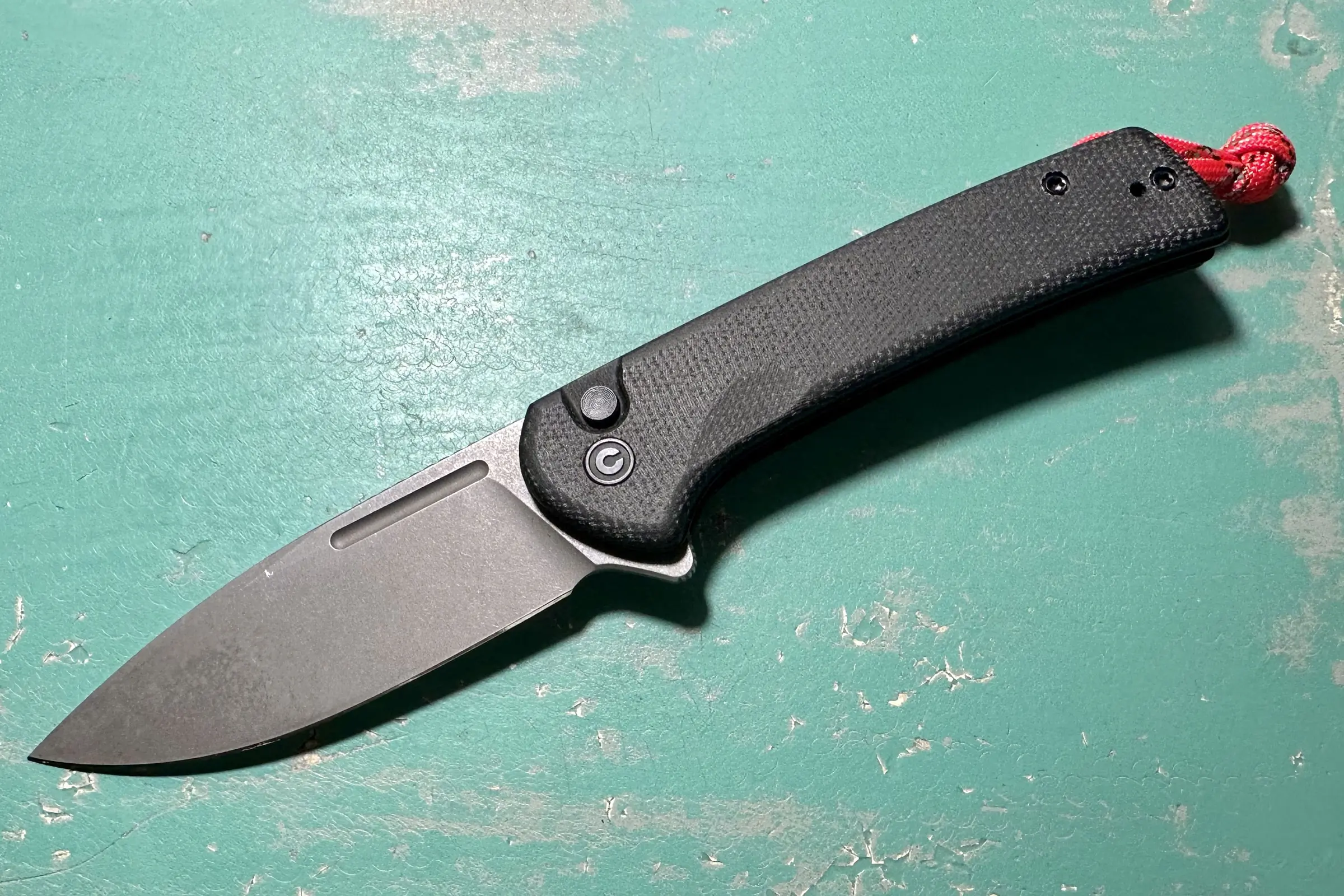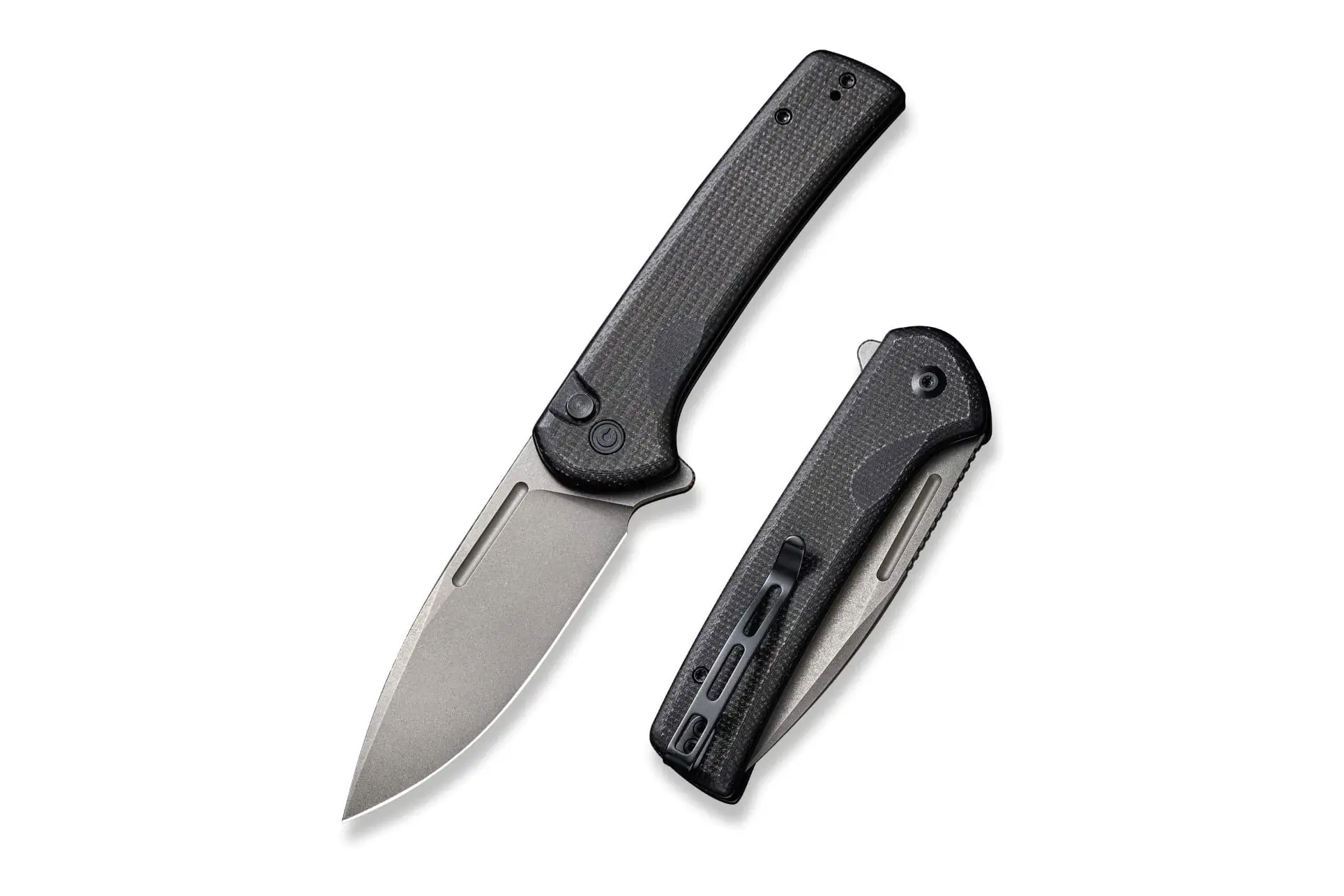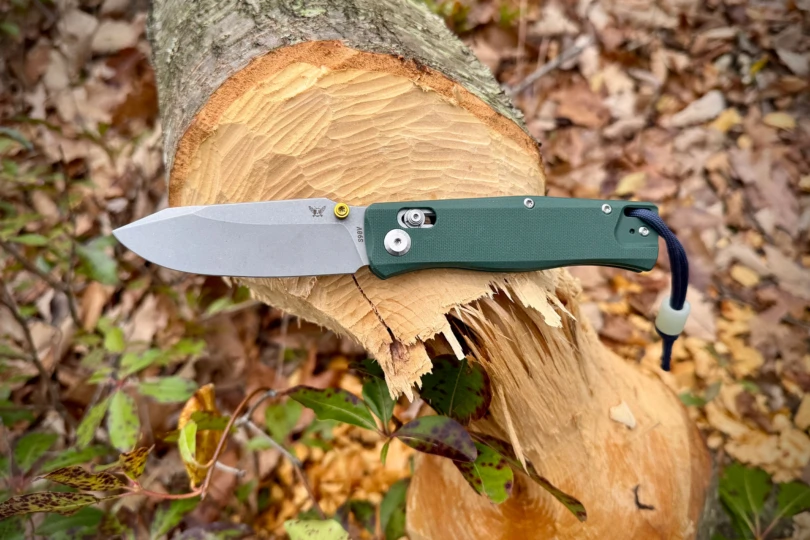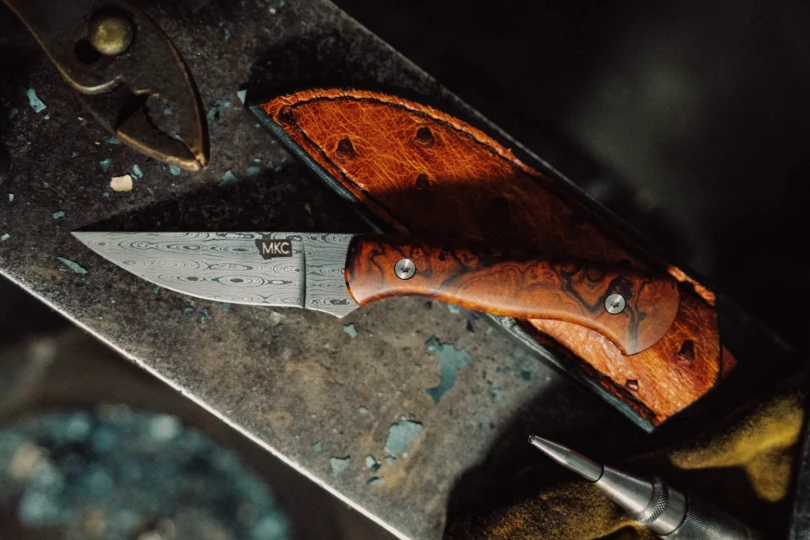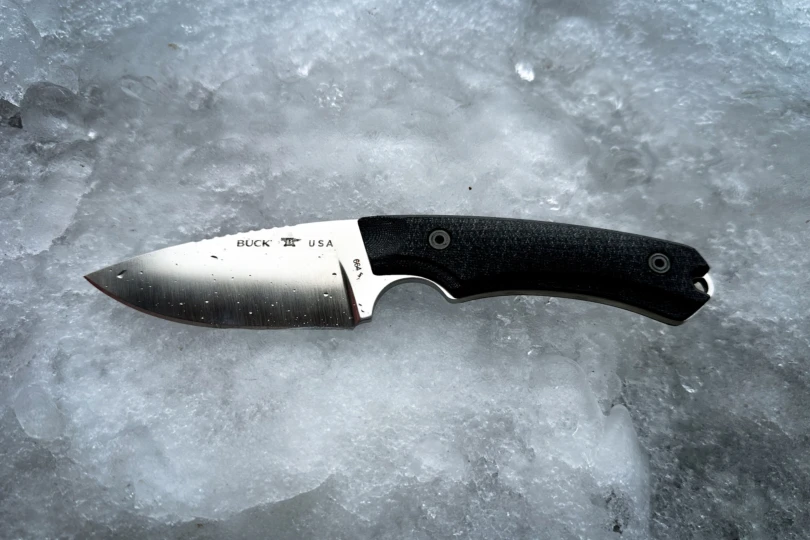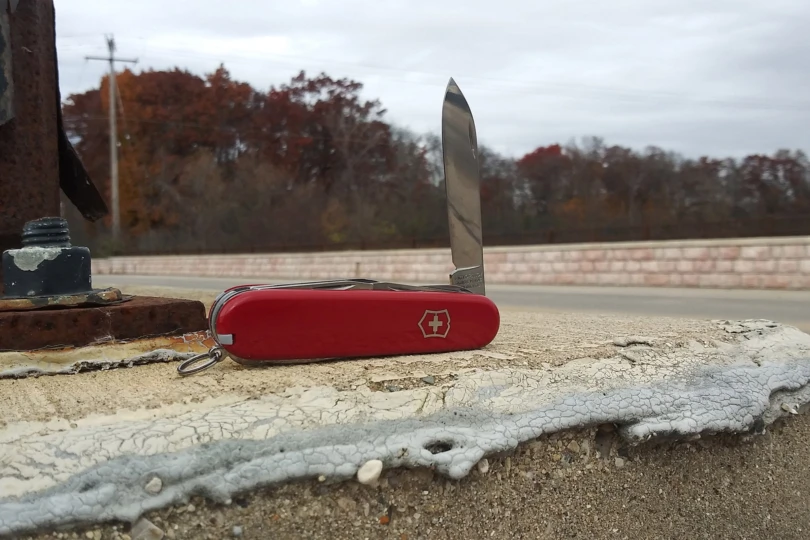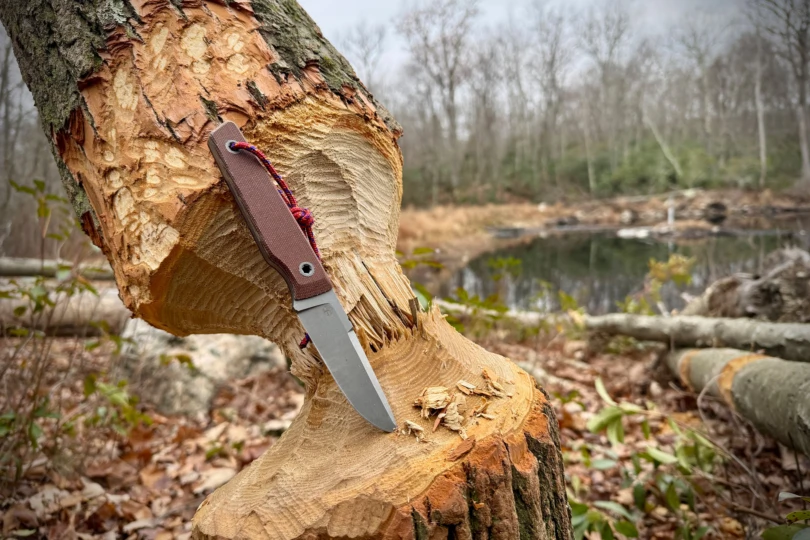Like AEB-L, not a lot of big-name brands have brought Nitro-V into their lineup. The first I heard of Nitro-V was when Civivi decided to use it in its Baby Banter. That’s when I talked to Ben Petersen, creator of the Banter line, and he let me know that Nitro-V was the bee’s knees — and that carried a lot of weight. After all, Ben could make a knife out of a tortilla chip and I would find a way to use it.
So when Civivi asked me if I wanted to test out the Conspirator flipper, which is a big, fat belly drop point flipper made from Nitro-V and Micarta, I had to take the brand up on the offer.
But now that I’ve been using and abusing the Conspirator for a couple of weeks, I think I have more questions about Nitro-V than I did before I experienced it firsthand:
- Why aren’t more brands using Nitro-V?
- Why is this tactical flipper, which comes in just shy of $100, offering such an impervious blade steel?
Seriously, why aren’t we seeing this steel throughout product lines elsewhere? Was there a fire sale on MagnaCut? Everyone seems to have glommed onto that awesome steel. But where’s the love for Nitro-V — quite possibly a superior knife steel?
While the top brass hashes out that mess, let’s get down to the nitty-gritty and see what the Conspirator can do.
In short: The Conspirator by Civivi is an EDC knife for the people. Due to the premium materials used in this knife, you can rest assured that it will take on years of use and abuse with little need for maintenance or worry about failure.
- OAL: 8.11”
- Blade length: 3.48”
- Blade steel: Nitro-V
- Blade shape: Drop point
- Grind: Flat
- Hardness: 58-61 HRC
- Lock type: Crossbar
- Carry right or left hand, Tip-up, deep carry:
- Weight: 3.8 oz.
- Price: $94
Pros
- Nitro V steel
- Micarta handles
- Ceramic ball bearings
- Fat-bellied drop point blade style
Cons
- I would have matched the pocket clip to the blade finish
CIVIVI Conspirator: Review
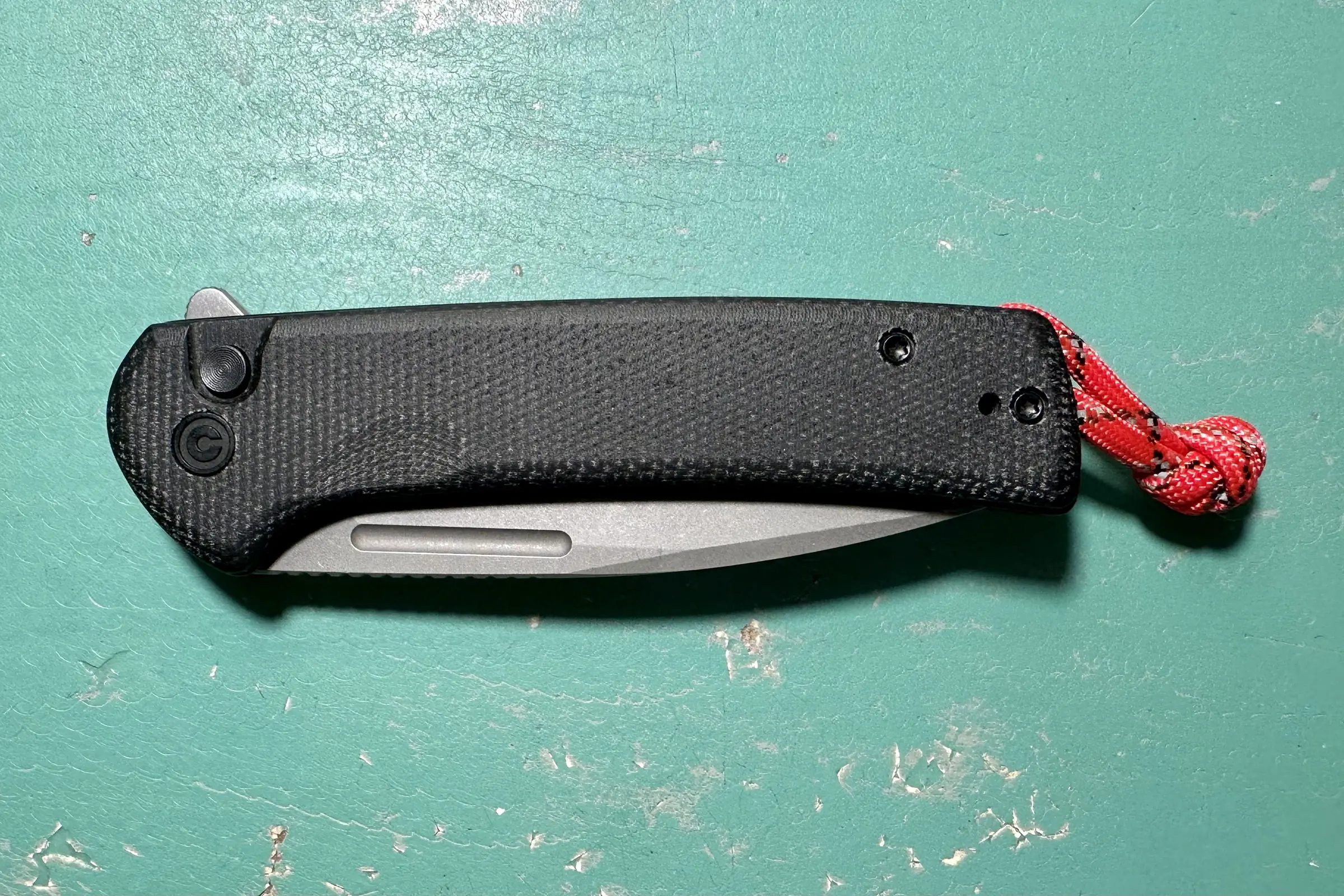
Design and Features
The Conspirator comprises a fat-bellied drop point Nitro-V blade that’s been stonewashed, further making it impervious to rust. It’s sandwiched between black-coated, stainless steel liners and black Micarta handle scales.
The pivot rides on a race of caged ceramic ball bearings operated by a jimped flipper tab, held in place by a crossbar-style button lock. When closed, the button provides tension to keep the knife from opening, and when opened, nothing will pop that blade out of place except fully depressing the button.
Once you do, the blade freefalls back into the closed position.
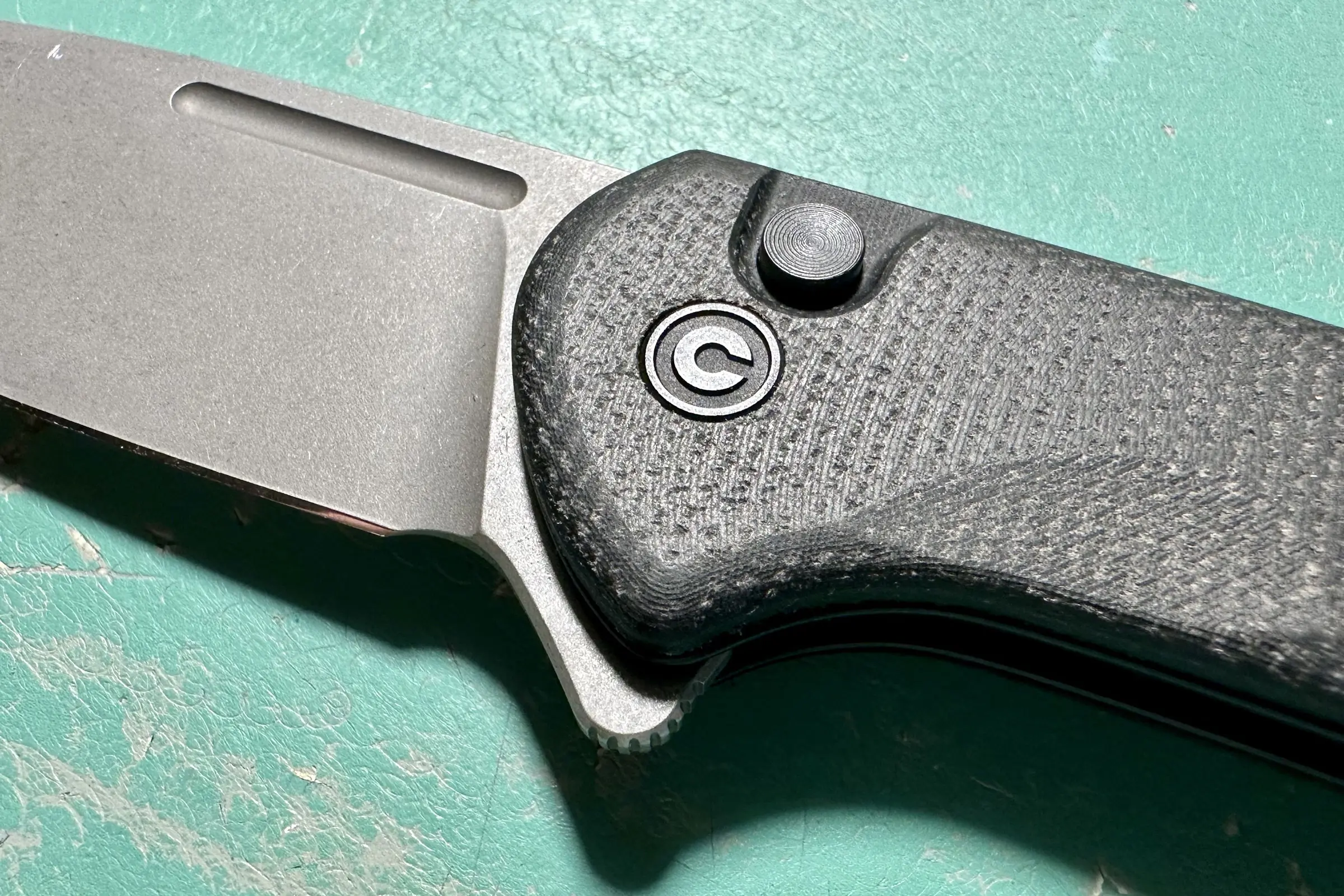



Wrapping up this solid tactical EDC package is a stainless steel, deep-carry pocket clip. It’s designed to carry the knife tip-up, left or right hand, and is black-coated to match the steel liners.
All of the hardware, pivot screws, and spacers are black-coated as well.
First Impression
I’m going to be completely transparent here: I completely forgot the Conspirator was on its way to me. When it arrived, I was heading outside to remove a bunch of roots from my rototiller. So, guess which knife made it out there with me to slash though those fresh and juicy roots?
Before I even had a chance to check it over, this factory-fresh Conspirator received a baptism in dirt and root goop.
So, my first impression was that the Conspirator was built to last. Nitro-V was going to prove tough to beat (and it needed a bath).
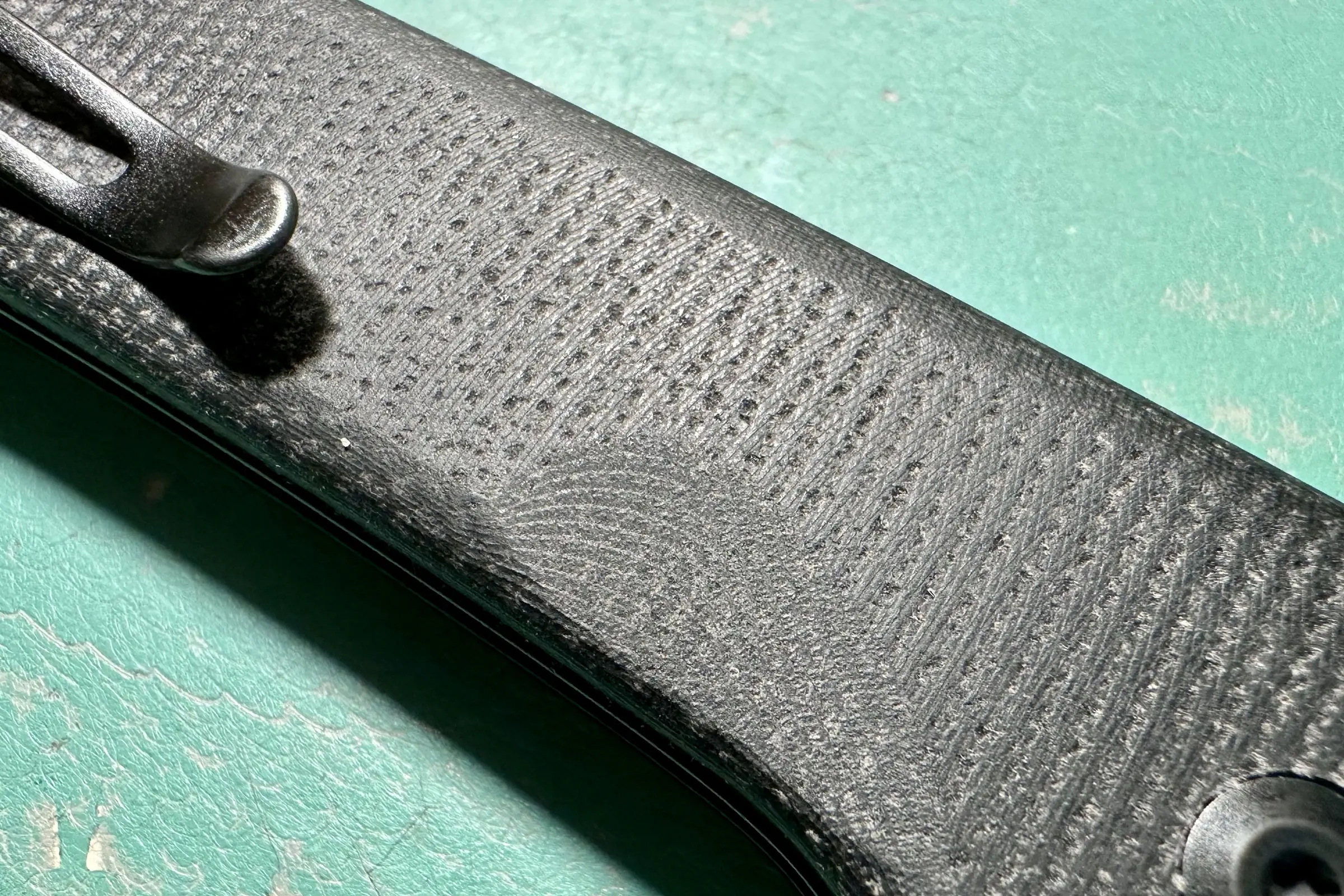



Otherwise, this is a very nice-looking knife with a good balance and feel. The pairing of satin black liners, faded black micarta scales, hardware, and stonewashed Nitro-V blade, give the Conspirator a subtle operator-style look, tactical for days.
This knife opens, closes, and maneuvers with such ease and fluidity that, again, I find myself questioning the knife market’s arbitrary knife classifications. The Conspirator throws all of those conventions out the window.
In the Field
My experience with the Conspirator started in the field and it only got better from there. Based on the materials and ease of use, I didn’t mind putting the knife to work in a series of familiar, but also unusual, tasks.
Since this journey began in the dirt, I used the Conspirator to make holes in the soil when I potted a bunch of seedlings. I also used the knife to cut open more than a dozen soil bags full of wet, fertile potting soil. Either of those tasks by themselves can corrode and dull a blade, and gum up the works so the knife opens and closes sluggishly.
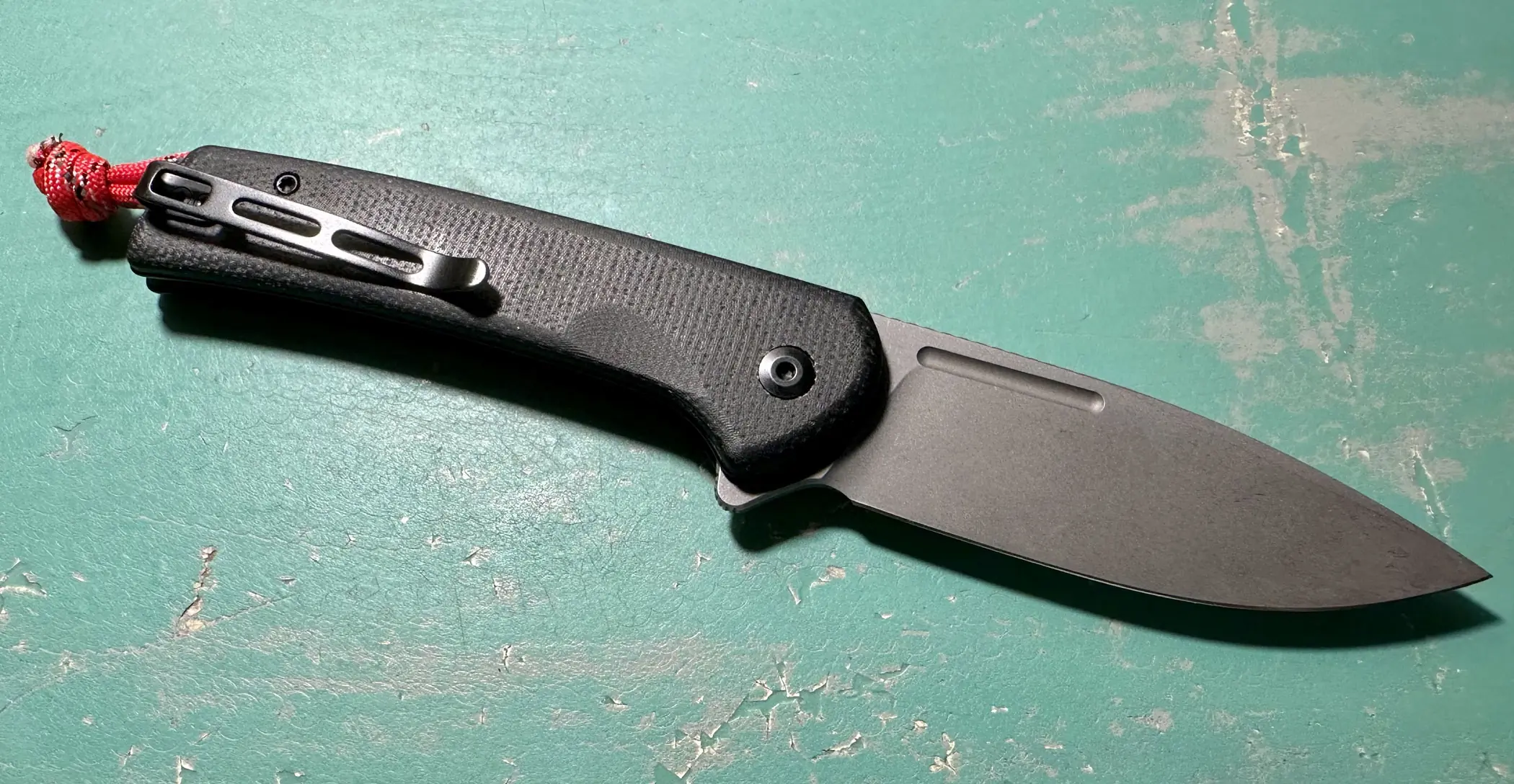



But in the case of the Conspirator, the impact was minimal. In fact, after hosing the knife off, I checked to make sure the blade was still sharp, and sure enough, it felt like it was brand new.
To confirm, I did a little shaving test on my arm and, as expected, there’s no need to hone or stone the edge at all. That’s wicked impressive, as far as I am concerned.
And it bears repeating: This knife costs less than $100 and comes from what some consider a value brand. But if Civivi keeps coming out with knives like this, big brands might need to start upping their game.
CIVIVI Conspirator Knife: Conclusion
Knives like the Civivi Conspirator keep me interested in testing and reviewing knives. This knife breaks the mold and questions everything I know about sales and marketing in the knife world.
Knives shouldn’t be classified based on what they cost. But they are.
The merits of the comparably budget-minded Conspirator are numerous. But here are the key points:
- You’re not going to find a more universal blade shape than a drop point blade.
- Micarta handle scales provide excellent grip in any condition.
- The industry hasn’t adopted Nitro-V yet, which probably keeps prices down.
- Nitro-V steel has some of the best corrosion resistance of all knife steels.
- Crossbar-style lock mechanisms are the strongest in the field.
- Flipper knives with ball bearings are just as quick to deploy as automatic knives.
- The EDC sweet spot, in my expert opinion, is 7½-8” of open length with a 3¼-3¾” blade.
For $94, the Conspirator ticks every one of those points. It easily adapts to a near-unlimited number of tasks because it’s designed with premium materials and built like a brick outhouse.
